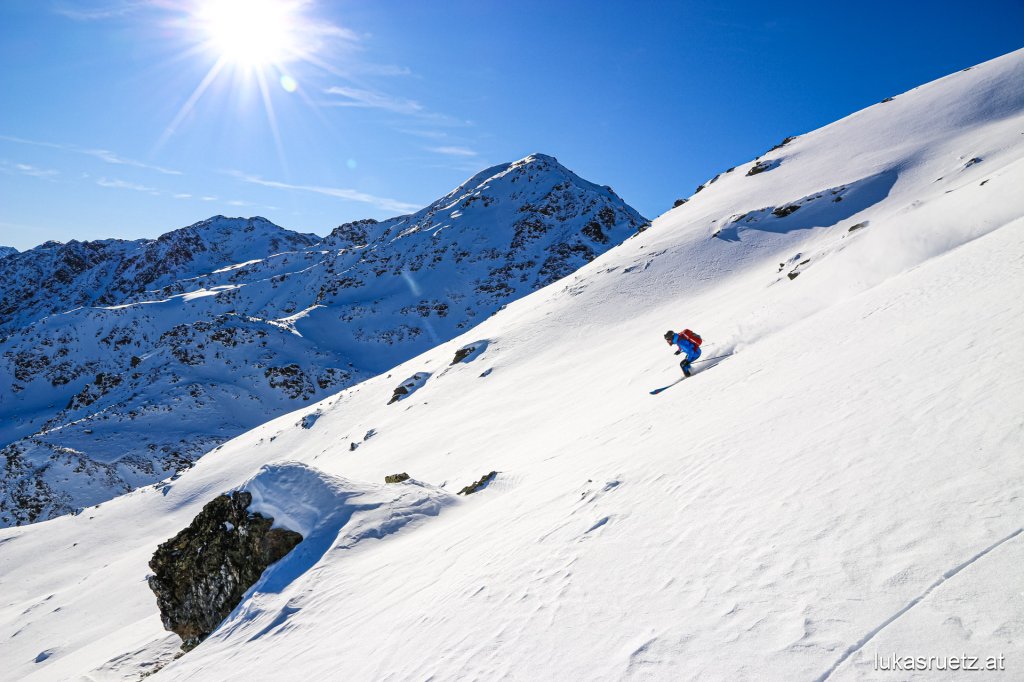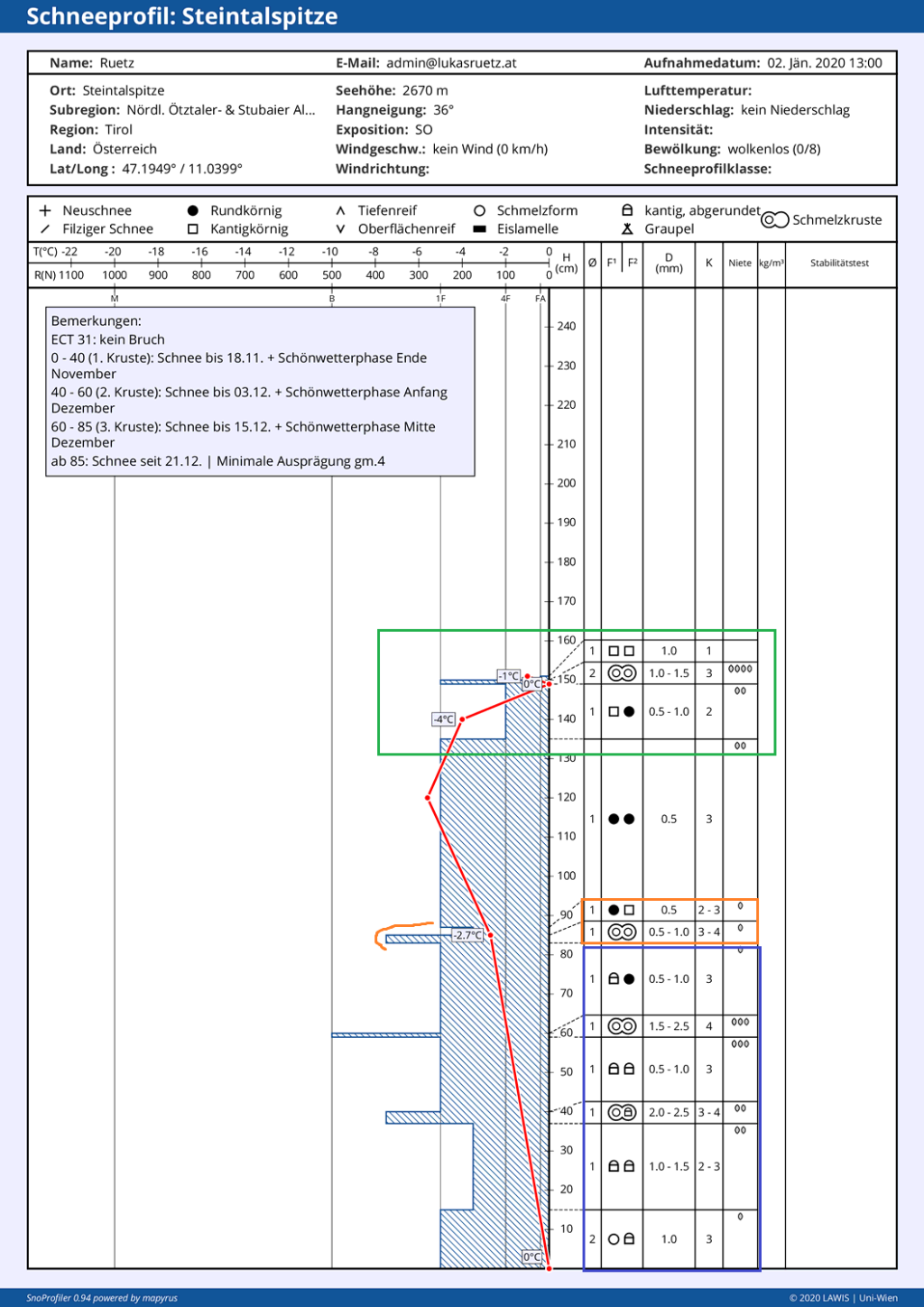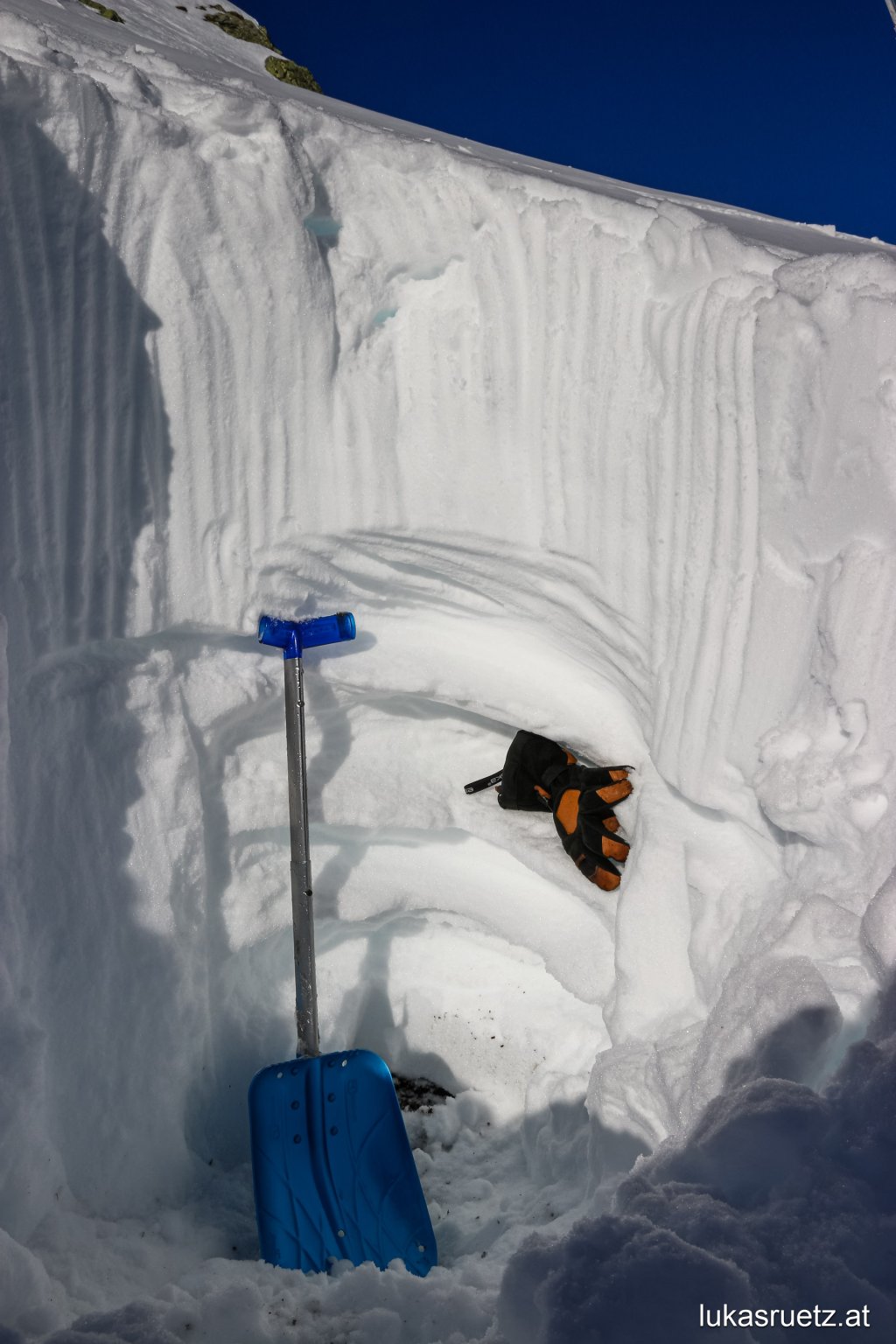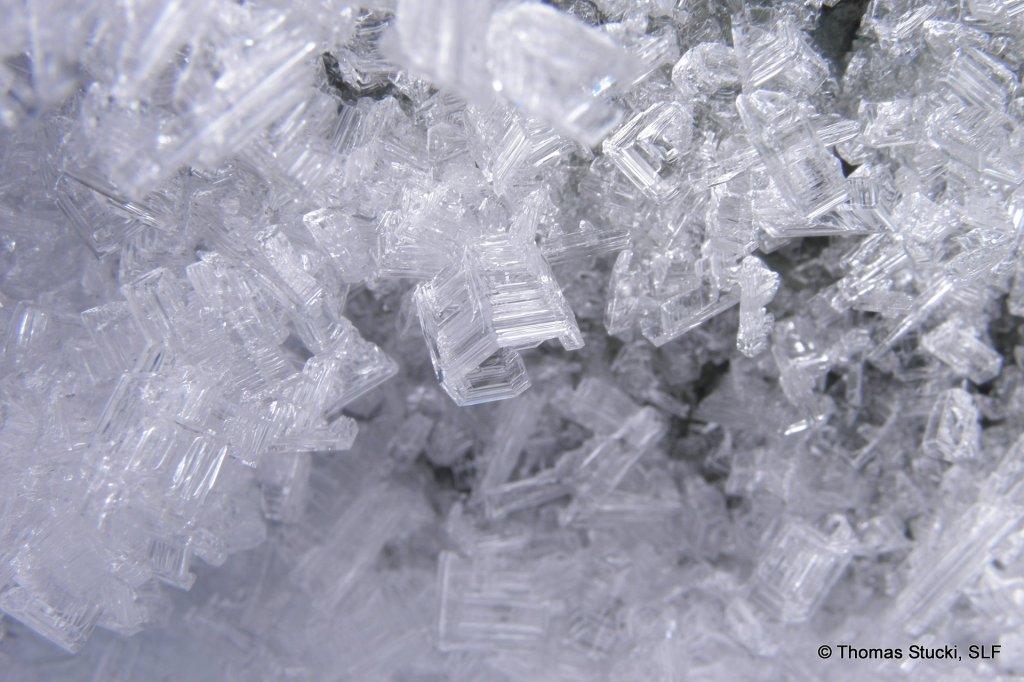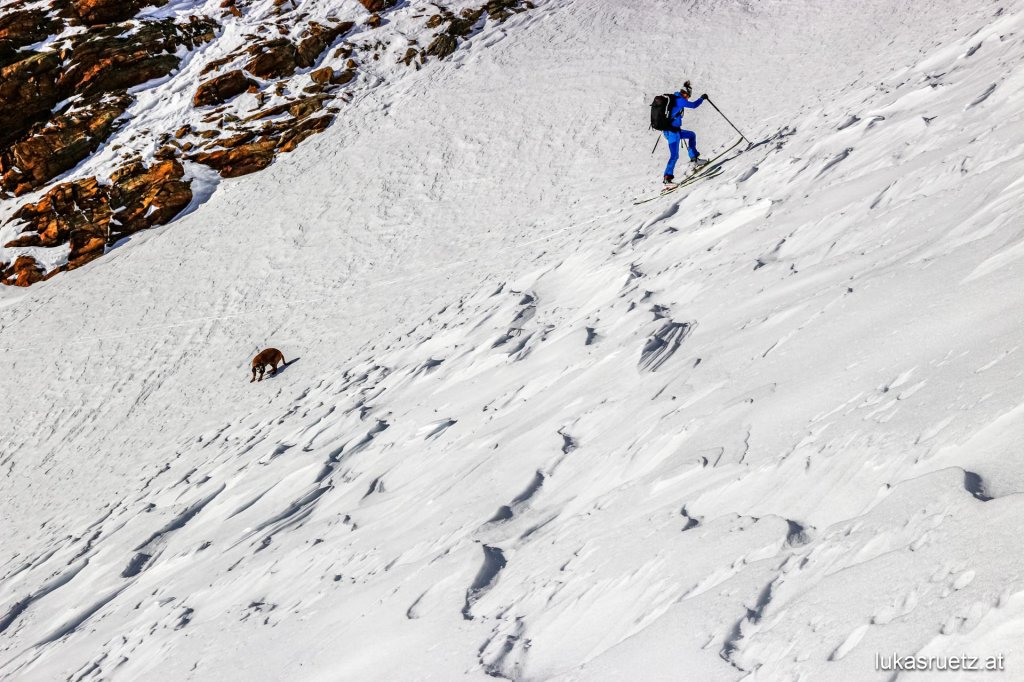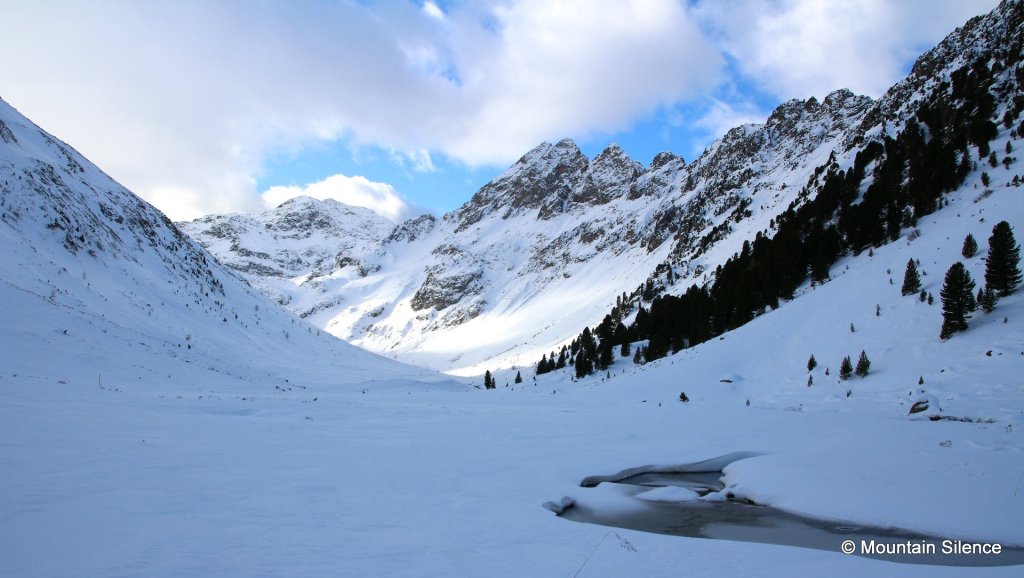Read profile: Steintalspitze, 02.01.2020, 2670m, SE, 36°
We are on a very steep south-eastern slope here. "Very steep" always means between 35° - 40° slope inclination. Anything steeper than 40° is called "extremely steep", anything from 30° - 34° is called "steep" and anything < 30° is "moderately steep" terrain. This is the official definition of the avalanche warning services. There is about 150 cm of snow in twelve layers here. At first glance, there is no distinctive weak layer as the blue hatching (= layer hardness) is nowhere strongly recessed to the right. On the other hand, we can see several deflections of the hatching to the left. These are crusts. These can be wind crusts or enamel crusts. In this case, we can see four fairly thin melting crusts distributed over the entire snow depth.
In the upper area (green) of the snowpack, there are signs of earlier build-up transformation. This can be recognized by the existing angular crystals. In the lower two-thirds of the profile (mainly the blue area), you can see evidence of past degradative transformation, i.e. round-grained snow and angular-rounded crystals - as well as a steep temperature gradient that continues to promote degradative transformation. But since the angular-rounded crystals were formerly angular crystals, we also know that the constructive transformation was already at work here a long time ago. But melting transformation was also present: On the one hand in the formation of the fusion crusts, and on the other in the lowest layers in the formation of the fusion form. The crusts were formed either by rain or warm temperatures or solar radiation. The moist melt forms in the lowest layer were probably transformed by the ground heat.
Assigning snow layers to certain snowfall periods or periods of transformation can be very easy, extremely difficult or not possible at all. Like Sherlock Holmes, you have to meticulously record all the evidence and link it to what happened. The crusts are the only way to draw precise conclusions about individual snowfall or fair weather phases. The snow from the heavy snowfall until November 18 with a subsequent fine weather phase ranges from 0 - 40 cm. During this phase, the snow cover settled and became superficially moist on very steep sunny slopes at this altitude. This superficially moist layer subsequently became a melt crust. It then snowed on top of this melt crust again until 03.12. Before the next phase of fine weather followed. Incidentally, there were really good conditions during this time! The snow surface became wet again and then crusted over. That's why you can attribute the 40 - 60 cm of snow to the snowfall in the first few days of December. From 60 - 85 cm the same game again: snowfall, fair weather, crust formation on the snow surface. The snow since 21.12. is above 85 cm.
